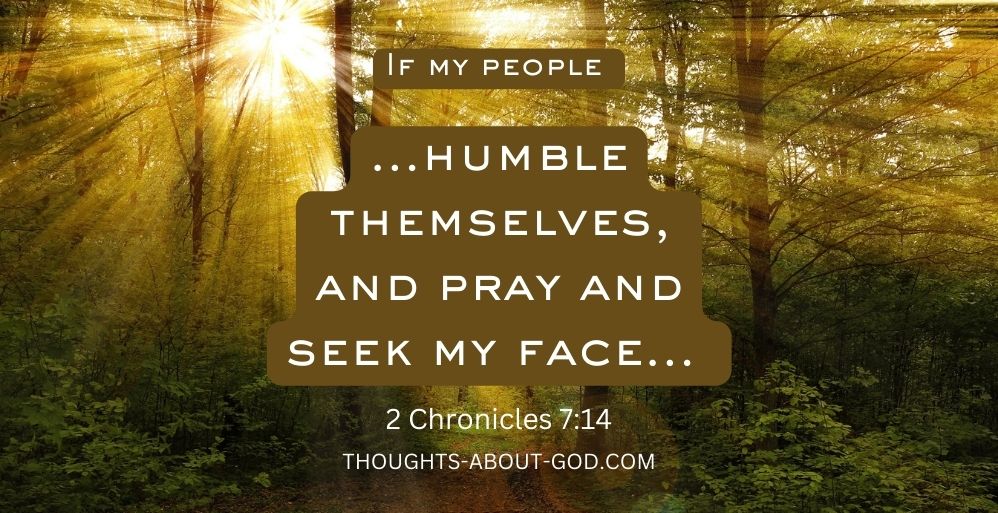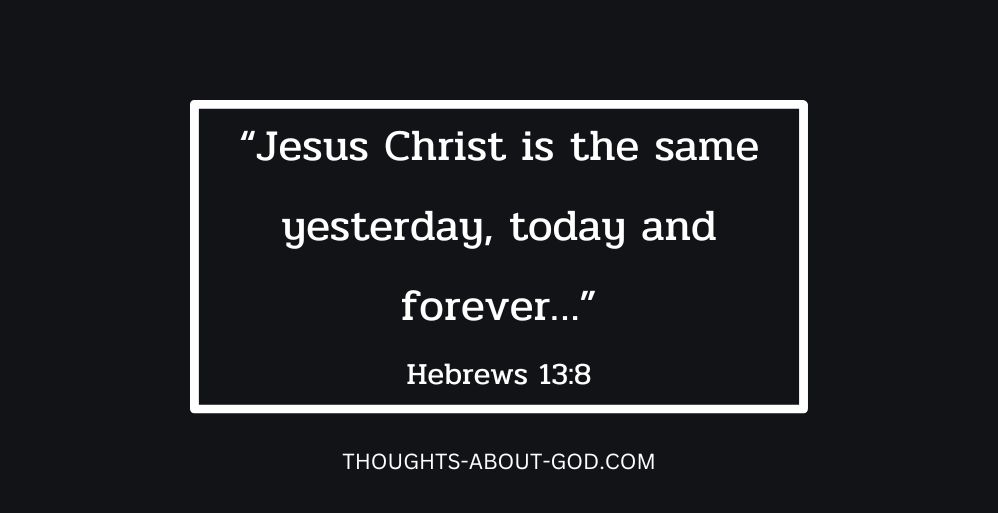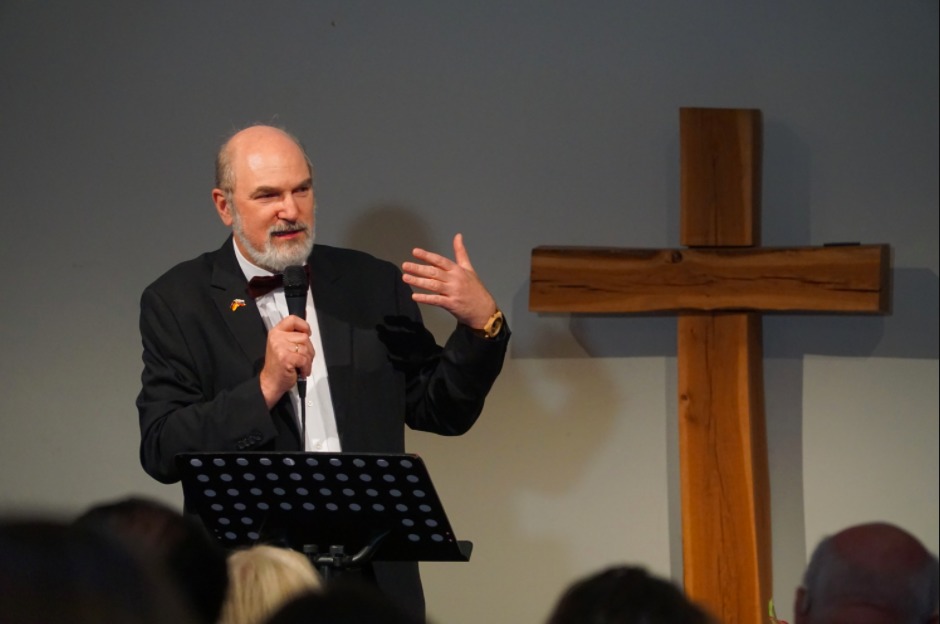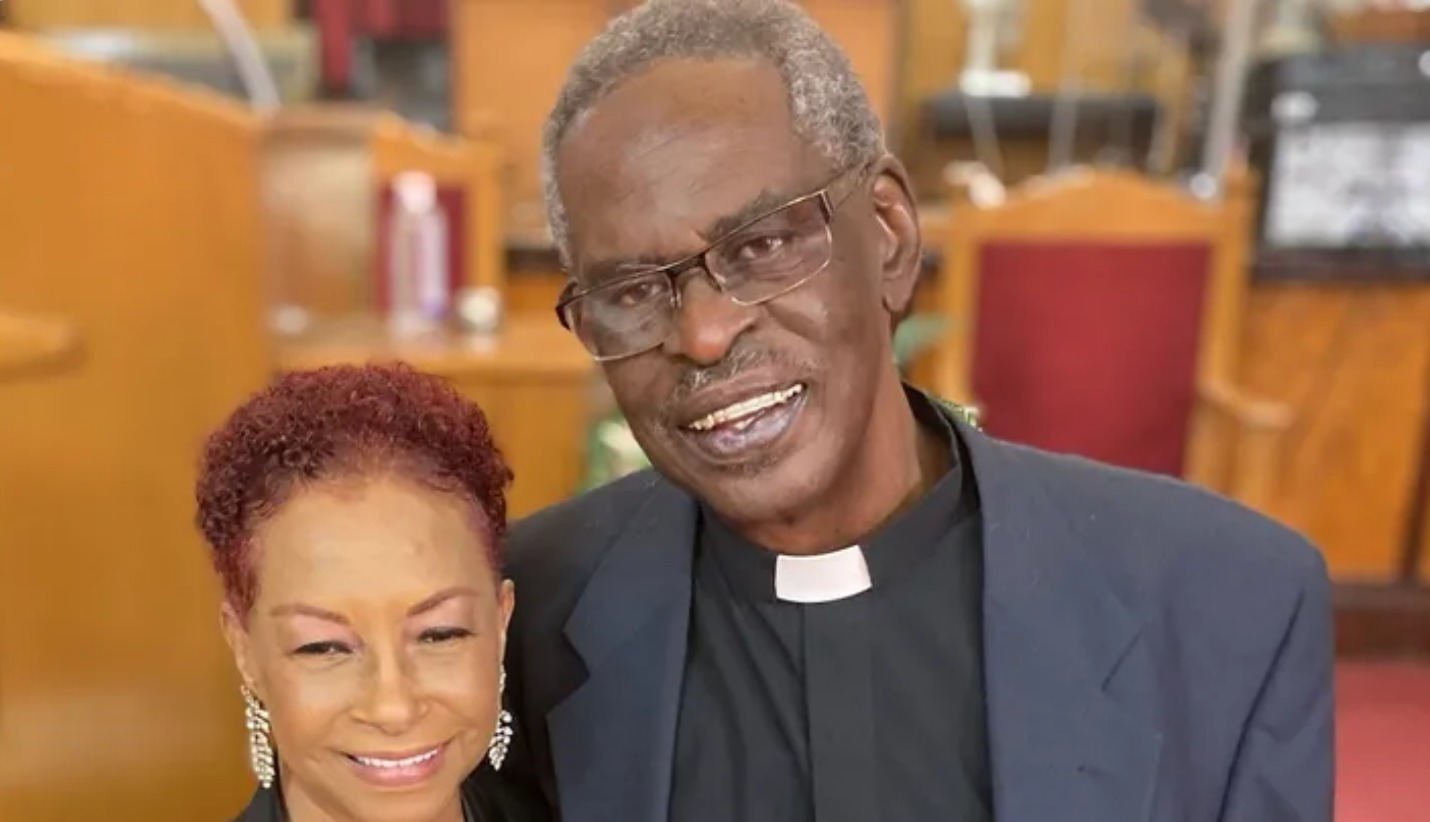0:00
Pete
You’re listening to The Bible for Normal People, the only God-ordained podcast on the internet. I’m Pete Enns.
Jared
And I’m Jared Byas.
[Jaunty Intro Music]
Pete
Hey, welcome everyone. Before we get started, two quick announcements, please. First: You probably know by now that Jared wrote another book, blah blah blah, he won’t stop talking about it. It’s really annoying. Anyway, it’s Jonah for Normal People and it’s actually really, really good. If you’ve had a chance to read it, would you consider doing us a favor? Just head over to Amazon and leave a review. These reviews will help Jonah for Normal People rank higher in Amazon’s search results and will help other people discover this masterpiece. That’s why we do this. [Sarcastically] Now, this is ONLY if you’ve read it AND loved it. If you hated it, just use it as a coaster and keep that kind of negative talk to yourself, okay?
But now moving on to far more important matters, I’m teaching a class this Thursday as part of our Summer School series, and it’s called “The Error of Inerrancy.” And I’ve found in my travels that when people have to work through a lot of stuff as they’re growing and evolving and developing in their faith is learning ways to look at the Bible that differ from, let’s say, their inherited faith. So that’s what we’ll be doing and it’s this Thursday, July 21st at 8 PM Eastern Time. Okay? Eastern Time, I can’t stress that enough. It will be recorded if you can’t make it live, so don’t worry about that, and as always, it’s pay-what-you-can. To sign up or for more information, visit us at thebiblefornormalpeople.com/summerschool. Hope to see you there!
[Jaunty intro music]
Teaser excerpt of Pete talking: “In Numbers, we’re dealing here with something that’s more like Israel’s self-portrait looking back at the past and writing a story where they portray themselves in a certain way. It’s not what we might call a ‘pure historical account.’ We are reading here how an ancient tribal Iron Age people, the Israelites, how they understood God in their context and their world.”
Pete
Our topic today is Numbers and my ruining it, so let’s just get right to it.
So first, why call it Numbers? Well, the Hebrew title is Bemidbar—which means in the wilderness—which is the 5th Hebrew word of the book. And a lot of the action takes place in the wilderness, and we’ll get to all that.
Now the English title Numbers, well it comes from the Latin translation called the Vulgate, Numeri. Remember, Latin was the official language of the western church, the one based in Rome, since about the fourth century. The Latin name is based on the earlier Greek name Arithmoi (which is where we get arithmetic from). And just a quick reminder that Greek became the main language of Judaism after Alexander the Great conquered the land of Judea around 332 BCE. And that led to the need to translate the Hebrew Bible into Greek—so Jews could actually read it. And by the way, that’s also the reason why the New Testament is written in Greek even though it’s a Jewish text. So anyway, Latin became the language of the church, and English Bibles take their names of the books from the Latin titles. So that’s where we get the title of the book Numbers.
Now the idea of “numbers” comes from the fact that there are some numbers in this book: two census lists, one in Chapter 1 and the other in Chapter 26. By the way there are 36 chapters in all in Numbers, and just as a side issue, because I mention this kind of thing in other episodes, the Hebrew text is divided differently that the English chapter divisions. The Hebrew is divided into nine portions, or parashot as they say in Hebrew, and they don’t correspond to our chapter divisions. It’s a whole different way of doing it, and a lot of times I think it’s far superior to the English chapter divisions which seem to have no rhyme or reason whatsoever.
Anywho, these two census lists provide a really nice structure to the book. You’ve got Chapters 1-25 that pertain to the Exodus generation (those who left Egypt), and Chapters 26-36 pertain to the next generation—and let me explain that here quickly and we’ll come back to it in a bit. The big plot line of Numbers is that the first generation, the Exodus generation, died off in the 40-year wilderness wandering period because of rebellion. Then the next generation takes over and a second census is taken, and they are the ones who enter Canaan under Joshua’s leadership after Moses dies. We’ll get to that, but that’s why we have two census lists that act as sort of like a structure for this book.
Okay, now lists of names—regardless of what you call them, a census or genealogy, whatever—lists of names are tedious to read, of course, let’s not kid ourselves, but getting the gist of their function is always worthwhile.
05:00
And these lists, again the two chapter 1 and 26, they’re not just, you know, bureaucratic lists for, you know, general information about people. We have to think of them more as theological statements; Theological statements of confidence and also thanksgiving to God for being so blessed. You know, sort of like, “Here we are, this is us, this is where we came from—God has brought us here and we’re ready to take the next step.”
Now, each census was taken of all men of military age—that’s 20 and older. The number of the first census, the total number, comes to 603,550, which is a lot of men of military age, and scholars will tell us regularly that a total population of about 2 million is what we’re talking about if you include women and children and those not of military age. And pretty much everyone agrees that historically speaking, this is an exaggeration. The numbers are just too big. But again, it’s an exaggeration that serves a purpose: “God is blessing us.” We’re sort of back to Genesis 1 with the whole fruitful and multiplying thing. They’re really fruitful and multiplying, “Things are moving in the right direction, nothing can stop us now.” And the second census—again, after the disaster of the 40-year period—is only slightly smaller: 601,730. Rather than pull over and get your calculator out, it’s a difference of about 1,800, which is about a mere 3% drop. The point is that this second generation is likewise blessed, despite the whole project almost going off the rails.
So these numbers are not historically useful, but they’re theologically revealing. Now some might respond, and I’ve heard this, “Now why would anyone make up such non-round numbers? They seem legitimate precisely because they’re not round. They seem historical.” Well the answer is, you know, why? Why not make up these non-round numbers? You know, we have nice round numbers that have symbolic value in the Bible (like 40, 12, and 7 to mention three of them)—but that doesn’t mean that these large odd numbers are automatically historical. And I think that’s really a very modern mindset, again, that sort of gives a default expectation to precision. Actually, number exaggeration —that alone is very well known in antiquity. And oddly specific numbers give the story some teeth, some sense of realness to the story, what they call verisimilitude. So they perform a function there too. The oddness of the numbers does not speak to their historical value.
Right, let’s keep moving and let’s look at the structure of the book but from another angle, beyond the two census lists. And I like this structure, I’ll tell you that right off the bat here. The book can also be organized around three geographic locations where the action takes place: Mt. Sinai, then the Wilderness between Mt. Sinai and the Promised Land, and then the region in and around Moab, called the plains of Moab, which is just across the Jordan River on the other side, the eastern side, of Canaan. So you have these three sections here: Sinai, Wilderness, Moab. There’s lot of wandering in Numbers. I think they should have called it “wandering” instead of Numbers. And anyway, I like this structure better. It gives a visual component to the structure—which is helpful to me and I like that. And if you know me, I like getting at the big picture feel for a book of the Bible because it helps give the book’s details some structure too. And anything that can help us with the structure I think is gonna help us with the details. Especially if you go on and continue to read Numbers on your own, you know apart from podcasts and things like that.
Okay, so, here’s what I want to do for the rest of the podcast. I want to briefly describe each of these three stages, and then I want to make a brief comment—because it always comes up—on the authorship on Numbers, and then I want to circle back though and spend most of the time going through the three parts; sort of highlights of what I feel is important to know and also some things that may be more familiar to many of you.
S0, first, let’s describe each of the three stages briefly.
- First stage, Sinai, that starts in Chapter 1 (duh) and it goes into about the midpoint of Chapter 10, verse 11. And this section concerns the preparation to leave Sinai after being there for eleven months. Remember, they got there, if you remember from earlier podcasts, they got to Sinai in Exodus Chapter 19.
10:00
They’re there all through the rest of Exodus (the second half of Exodus), all Leviticus, and now they stay there until Chapter 10 in the book of Numbers. Now, not to beat a dead horse—I looked at this very briefly in my last episode on ruining Leviticus—but the four books of Torah where Moses is the main character (that’s Exodus, Leviticus, Numbers, and Deuteronomy) those are 139 chapters long. Sixty of them are spent at Mt. Sinai. Big focus in Torah on the receiving of the law and also instructions on proper worship. These are two of the central issues for Israel’s existence, or lack of existence if you want to talk about the Exile. Kings and commoners will be judged by God and the prophets by how well they handle these two issues. Mt. Sinai is really about preparing the Israelites to enter Canaan as Yahweh’s distinct and obedient people. Alright, so these ten chapters, roughly ten chapters, they cover about a 19-day period.
- Next, the Wilderness section is covered in Chapter 10, it begins in verse 12, and it goes until about the middle of Chapter 21, verse 9. And this was to have been a relatively brief journey to Canaan. From Sinai they were to head due north to the southern border of Canaan, invade, and conquer. But again it turned into a 40-year ordeal. Why? Because the people rebelled, which led God to keep them in the Wilderness for 40 years to allow time for that wicked generation to die out, specifically, all those 20 years old and older. And that rebellion occurred a mere 3 months after they left Sinai, and this second section, these 12 chapters, it covers about 38 years. A lot of ground is covered.
- The third section occurs in the Plains of Moab and it runs from 21:10, the middle of Chapter 21, to the end of the book in Chapter 36, and it covers about four to five months of the fortieth year, right? We’re in the last year, it covers a few months of that, and likewise Deuteronomy (it’s hard to actually keep Numbers and Deuteronomy separate once you start talking about them) will also take place all within that fortieth year. Moab is on the eastern side of the Jordan River, across from Jericho, and here is where they stay from this point on throughout Deuteronomy until they invade Canaan under Joshua. So the next book, Deuteronomy, takes place, again, in the Plains of Moab, and all of this is Moses’s final speech—something of a pep talk—to this new generation, which includes a retelling of the Sinai law for the benefit of this second generation that wasn’t at Mount Sinai. Very interesting stuff, Deuteronomy, which we’ll get to in the next solo episode. But for here, let’s continue with the topic, which is Numbers.
So like I said, I like breaking Numbers down geographically. I can just visualize it better. And if it’s new to you, it’s well worth looking at a map in the back of a Bible you might have or just Googling one, because having a visual definitely helps. I find just reading the text with something visual in mind that I know is concrete and, let’s say, accurate is helpful for just taking in information that otherwise might just seem like a bunch of gobbledy-gook.
Okay. All this is introductory stuff. Now, a quick word about the composition of the book of Numbers, which means how was it written and when it was written as best as scholars can tell. And with this we are entering a huge topic that affects Torah as a whole, Numbers being just one part of it. And I don’t wanna get into all that here, because we covered this in other podcasts and I want to give you a few to listen to, well at least one of them is Episode 125, that’s a good one to go to. So let me just boil it down here for Numbers, all this authorship stuff that affects the whole Pentateuch and now affects the book of Numbers.
Like the other books of Torah, Numbers is not a book created out of whole cloth by one person in one sitting. In the world of biblical scholarship, what I just said is not at all controversial—it’s in fact rather obvious. It’s like saying molecules are made up of atoms. Rather, the book of Numbers as we know it was edited together at some point in Israel’s history from various earlier sources, and those sources were probably oral and written.
Most of Numbers is from the so-called Priestly source or the Priestly tradition, which is usually referred to as P—not the most exciting designation, but it makes sense.
15:00
Priestly source, right? And that’s also the source that makes up a lot of the book of Leviticus and a fair amount of the book of Exodus as well. This is the tradition that’s called Priestly because it uses standard priestly words and concepts that distinguish it from other traditions that make up Torah. It has things like legal codes and regulations for formal worship. We also see in Numbers other sources, some that can’t be easily categorized, but others that do pop up also in Genesis and Exodus—and these are referred to as J and E sources—these are not legal traditions but they’re narratives.
Now, Nerd Alert here folks, if this is TMI, please just ignore it but give me 30 seconds here. J stands for the Yahwist source because this author tends to refer to Israel’s God as Yahweh—and it’s called J instead of Y because Germans spell Yahweh with a J, and they are the ones who came up with this idea. E stands for the Elohist source because this author tends to refer to Israel’s God as Elohim, which is translated in English Bibles as simply as God typically. It is a common view among scholars that the P tribe brought together the older J and E narrative material and shaped it in their way to support a priestly point of view, a priestly ideology. I know that’s a mouthful, but there are a lot of moving parts here. But I did warn you and say this is a Nerd Alert, okay? So ignore it if it didn’t help.
A lot more to say on authorship, folks, but let me direct you to four podcast episodes that may help: Episode 48, again 125 that I mentioned before, 171, and 204.
Let’s focus for the rest of our time on some highlights of each of the three sections of Numbers.
So first, the period at Mt. Sinai. This section is all about preparing the Israelites to leave Sinai and head to their new home, the land of Canaan. It begins with the census, as we’ve seen, though the tribe of Levi is not included here in this census. It’s one of the twelve tribes, right? But that’s because they are the special priestly tribe set apart for special priestly duties over the tabernacle and they will not get their own territory in Canaan—they get the tabernacle. And they have their own census, and we find that in Chapters 3 and 4. So they’re like a separate thing entirely.
So after the census of Chapter 1, we read about how the tribes were organized into camps around the tabernacle for the purpose of marching into Canaan. And this is apparently a big deal. At the center of the camp is the tabernacle itself, where God’s holy presence resides (at least sometimes). Now think in terms, just visually, think in terms of concentric circles. Immediately surrounding the tabernacle on its four sides was the tribe of Levi, that set apart tribe. On the eastern side you have Moses, Aaron, and Aaron’s sons—remember this is the priestly line and the high priestly line from the sons of Aaron. This is like the special pride of place side, the eastern side, this is apparently the most prestigious side. The other Levite clans, not priests but Levites—again, we talk about this in the Pete Ruins Leviticus episode of a few weeks ago—but the Levite clans, not the priestly clans, they are on the western, northern, and southern sides. And the three clans are the clans of Gershon, Kohath, and Merari. See? So we have the tribe of Levi, divided into four sections around the tabernacle’s four sides. Okay? With the high priests/priestly ones on the eastern side, apparently the most prestigious and important side.
Now, around the Levitical tribes—again, concentric circles here, folks—around the Levitical tribes were the other tribes of Israel, the twelve tribes themselves. How are they organized? Well, good question. Remember Jacob? Back in Genesis he has twelve sons through four women: his two wives, Leah and Rachel, and also through each of their so-called “maidservants” (Zilpah and Bilhah are their names)—and by the way I’ll never think about this whole thing the same way after watching The Handmaid’s Tale but that’s another thing entirely. Anyway, Jacob with his first wife Leah had six sons, seven if you want to include Levi but we don’t. [Levi’s tribe is] already accounted for, okay? They’ve got their own thing going on around the tabernacle. So the six sons that remain, three of those six will march on the eastern side (aha!) and three on the southern side.
20:00
So remember east was the same side as that of the high priestly line—it’s where the top dogs march. So you might expect who to march on the eastern side? Well probably Leah’s eldest sons, right? That makes sense. Pride of place to the elder sons not the younger sons. But that’s not what happens. Her two eldest sons, Reuben and Simeon, are on the south side along with a later son, Gad. Which sounds a bit disrespectful. I mean, why are the elder sons not honored? Well, Genesis tells the story of how Reuben and Simeon lost their places in the pecking order—Reuben for sleeping with his father Jacob’s concubine Bilhah, and Simeon for tricking and then massacring the Shechemites. So they lost their places in the pecking order. The third son of Leah in the pecking order is Levi, and again, he’s removed from the pecking order by being set apart by God for priestly duties.
That leaves the fourth son, Judah, who along with the two remaining sons of Leah, Issachar and Zebulun, they march on the east side. Hmm. So of all the sons of Leah’s, seven of them, only three of them wind up marching on the east side. Oh well, that’s the way it is. See, you might recall from other podcasts that Judah is really highlighted and fronted in Genesis as God’s special tribe, because from Judah will come guess who? King David and all the kings of Judah. And Judah’s very important in the Hebrew Bible because Judah will become the lone tribe that survives exile. The rest are gone. See, Judah’s specialness is something that the writers of Numbers and Torah are taking into account because they’re writing long after this stuff happened. They’re writing already with the knowledge of what happened with exile, and how Judah survived, and so Judah gets woven into the stories of Torah, you know, because these stories were written in part to recount the story of Judah’s survival. And I can point you here to episode 172 if you’re interested in listening to a little bit more about this.
So anyway, you have then the north, we have the three sons of Jacob and the handmaid Zilpah, and that’s Dan, Naphtali, and Asher. And on the western side we have the sons of Rachel, Jacob’s beloved wife. Now Rachel, you may recall, had only two sons, Joseph and Benjamin. That’s only two—we need three to round out the twelve, right? Three on each side. Well, Genesis takes care of that little problem. As he lay dying, Jacob summons Joseph and his two sons, Joseph’s two sons, Ephraim and Manasseh. And Jacob, what does he do? Well he adopts the boys as his own. So these two sons replace Joseph. Joseph is one of the sons of Jacob, he doesn’t have any territory, he doesn’t have land. Joseph is replaced by his two sons Ephraim and Manasseh—that’s what gives us a total of twelve. You know there really is a lot of leapfrogging going on in Genesis and in the Hebrew Bible as a whole. Again, episode 172 might help.
This is par for the course. If you’re familiar with the Hebrew Bible, watching this sort of leapfrogging of younger sons taking place of elders and things like that, it’s a pretty common thing.
Okay, well anyway, those earlier stories in Genesis are echoed here in the ordering of the tribes around the tabernacle. Now, I don’t want to get into the whole question of history here, again at least in any detail, but let me just throw it out there that scholars generally agree (I would say overwhelmingly agree) that all this business about well-organized tribes marching around seems to be not really a historical snapshot but more reflecting an idealized past on the part of the later authors and compilers of Numbers. And you know, this is the case with the other books of Torah as well, there are a lot of areas where the history of it all is questioned, and not without reason. We do talk about that in other podcasts and in the blog posts, so rather than always majoring in that, I just want to mention it here as a reminder that we are dealing here in Numbers with something that is more like Israel’s self-portrait looking back at the past and writing a story where they portray themselves in a certain way. It’s not what we might call a “pure historical account.” The stories of the deep past were told really to comment on the writer’s present, and where they are and where they’re going. An analogy that I’ve used, and I hope this helps, it helped me a lot when I first saw it—
25:00
…I got this from Gary Rendsburg (and look at episode 195, we had him on the podcast)—but there’s an analogy here with something like Arthur Miller, who wrote The Crucible in the 1950’s. And he wrote it about the Salem Witch Trials but it’s really not about that at all. It’s about Miller casting judgment on McCarthyism, which was a witch hunt of its own in the 1950’s. See again the past is employed to comment on the present. And this seems to be happening quite a bit in Torah and happening in the book of Numbers.
Anyway, I took the time here, I took a lot of time here, to talk about the ordering of the tribes around the tabernacle because (1) the tabernacle is a central issue in Leviticus and Numbers and it touches on some important scholarly issues, and secondly I did this because you and I both know that if you ever read Numbers, this is the part that you skip. So I figured I’d force you to think about it. See, you’re welcome. Anyway…
Now, as for the rest of this first section, much of it overlaps with Leviticus in that we read about the duties of the priests, like purity in the camp and other such things. And this section ends with God’s guiding presence in cloud and fire. Remember they’re traveling, right? And that of course is very much an echo of the exodus story with the cloud and the fire. See the point here is that the exodus isn’t over just because they got out of Egypt. The cloud and fire remain with them until they do what? Enter the land. See, that is when the journey is complete. Only when that happens are they done traveling. Until then, the God of Exodus is still with them. Whenever the cloud by day or the fire by night moves, the camp is to follow according to the marching orders that we looked at.
Apart from that, there are two other highlights from this section that I just want to mention, in part because these might be familiar to some of you.
The first is in Chapter 6, where we have the priestly benediction, also known as the Aaronic benediction, right?
The Lord bless you and keep you;
the Lord make his face to shine upon you, and be gracious to you;
the Lord lift up his countenance upon you, and give you peace.
It’s a beautiful section of the book of Numbers, very well-known passage probably to many of us. And what it is, is the Lord’s command to Moses which he is to relay to Aaron and his sons for when they bless the Israelites, “This is how you do it.”
Now here is why I mention it. There are all sorts of things we could talk about in Numbers, I just wanted to mention this because this blessing was found inscribed on two silver amulets from a place called Ketef Hinnom. And they were discovered in 1979 and are dated to about the year 600 BCE. So what? Yeah, here’s the so what…This makes them the oldest known fragment of a biblical text, nearly 400 years older than the oldest manuscripts from the Dead Sea Scrolls.
And you know folks, I think this is wonderful, but I bring it up just as sort of a cautionary tale here. Let’s be a little bit careful about this. Just because a fragment of what we call Numbers 6:22-27 dates to 600 BCE, just because we have that does not necessarily mean that the book of Numbers was already in existence by then. Huh? Yeah. It doesn’t mean that. It may have been, in whole or maybe just in part, but we don’t know that and it doesn’t necessarily mean that the book of Numbers existed. In other words, we don’t know that these silver amulets were based on the book of Numbers, that someone was quoting “The Bible.” See, we think that way because we put Bible verses on mugs, t-shirts, pens, whatever. But these two amulets are not necessarily quoting the Bible. Personally, I would be happy if that could be established—I’d be thrilled, frankly—but it can’t be. It would be nice to say that Torah existed by the seventh century BCE and already had enough authority that Israelites would quote it and put it on an amulet. That MAY be the case, but we can’t tell and we shouldn’t presume. All we can say is that the Aaronic blessing appears in a late seventh century inscription AS WELL AS appearing in what would become the book of Numbers. That may not be as much as we’d like to say, but it’s still a big deal.
Second, given the current political climate in America now over Roe v. Wade, I think you’d never forgive me if I skipped over Numbers 5:11-29, for this passage has been brought up a lot recently.
30:00
By the way, I’m recording this episode about two weeks after the Supreme Court’s draft opinion on Roe v. Wade was leaked, so it’s on everybody’s mind, it’s all over social media. Now this passage has been brought up, and understandably so, by “pro-choice” advocates. Now if you’re not familiar with the story, this is the basic gist of it. It describes a legal procedure. Let’s get the scenario down. If a husband feels he has reason to suspect his wife of unfaithfulness, he is to bring her before the priest. As a test of whether she was unfaithful or not, she is to drink a concoction made up of dust from the floor of the tabernacle (why? is a good question and a whole other thing we could talk about for half an hour) mixed with holy water. First in this procedure, this ceremony, she swears she was not unfaithful and then she drinks. If she is innocent, nothing happens. If guilty, then something happens, and the whole question is: What is that something that happens? The Hebrew is not super precise. According to the Hebrew of verses 21-22, if she is guilty, here’s what’ll happen: her thigh or maybe her loin falls, or drops, or sags, and her belly swells. Okay, so what does that mean? Well, that’s not altogether clear.
It has been taken to mean, on TikTok and other various authoritative social media sites, that the woman was impregnated by this other man and God’s punishment is that the woman has a divinely induced miscarriage. Some Bible translations support this view. So this then is supposedly an example of a divinely induced abortion. So, “don’t say God is against abortion if God lays out a circumstance where an abortion is a legal outcome.”
This is not a ridiculous interpretation, but I don’t think it’s right and let me tell you why. For one thing, the husband only suspects that his wife has been with another man and he becomes jealous. There is no indication in the story that his concern, or anyone’s concern, is that she might be pregnant by this other man. So all this loin dropping and belly swelling business might just be a matter of not a miscarriage but a forced infertility, right? “Because of your infidelity, the punishment is not you will miscarry, but you will never have children.” This is supported, to me this is the clincher, this is supported in verse 28, where we read that if the woman is innocent of adultery, she will be immune from the potion and “be able to conceive children.” See, in other words, the effect of the potion seems to be forced infertility, not a forced miscarriage. I think the only way to read this as a divinely induced miscarriage is to assume that the woman is pregnant, which is not impossible, but it’s not stated either, and it really seems to run afoul of verse 28 which I just cited.
So all that being said, let me be very clear here that I am not getting into the abortion debate in this podcast. I just want to talk about Numbers. So please don’t presume to know what I think about abortion based on this little discussion of Numbers Chapter 5. Now I happen to believe firmly that no argument concerning abortion on either side of the debate can be based simply in Bible verses. That’s I think where the big problem is. I think the real arena for the debate is in the world of theology and Christian ethics—which is a vastly more interesting and vital approach, one that’s actually built to handle the complexities of all sorts of issues we face today, and does a much better job than proof-texting which I think more distorts things than clarifies. And I do want to remind you too that there are different options out there for how to handle this passage. Mine is not the only one. The miscarriage interpretation, I mentioned this before, it happens—it is not uncommon, I see it in Bible translations. But as far as I see it, punishment here is infertility (not miscarriage)—that seems to be the clear focus of the text, and I think reading this as an abortion proof-text is probably asking it to bear far too much weight than it’s able to bear.
Okay, let’s move into some highlights from the second section, the Wilderness section.
First, to repeat, the Israelites wind up spending an unexpected 40 years wandering around in the wilderness.
35:00
The original plan was to move directly from Sinai north to the southern border of Canaan and begin the hostile takeover from there. So they sent out spies—a good move, you know, this is not a stupid thing to do—they sent out spies to see what’s up, and they came back 40 days later. What’s with 40, by the way? It keeps popping up. Anyway, they came back 40 days later with some good news and some bad news. The good news was that, yes, this is a great place for us to settle—it is indeed flowing with milk and honey. What a great place. What a paradise. The bad news is that we can forget about it. We are outmatched, the people are strong, the towns are large and fortified, and there are even some giants there.
By the way, these giants are well, they’re the Nephilim (which means “the fallen ones”) who may be the half-divine, half-human descendants of the divine beings who cohabited with human women back in Genesis Chapter 6. This is how the flood story begins. Be that as it may, we’re not going to untangle that knot here. It’s a really interesting story and again, with a bunch of moving parts. But the main point is that the Israelites looked at all this stuff and they got cold feet, all except Joshua and Caleb. And this angered God and sentenced that generation to a 40-year timeout to give that generation time to die off.
The theme of rebellion, disgruntledness, complaining is prominent in Torah and especially in Numbers. We see it already in Exodus, where the Israelites challenge Moses’s leadership from almost the beginning. In Numbers 11 they are complaining about manna, so God gives them quails. But then right away, Miriam and Aaron (Moses’s brother and sister) they start challenging Moses’s leadership—like, “Why does he have all the say?”—which also made God very angry. And now here in Chapter 14 is the big rebellion on the border of Canaan. They’re almost there, and that led Moses to intercede for the Israelites once again. It’s quite a mess, but some sort of rebellion against God or God’s chosen authority figure is a common theme in the Hebrew Bible, including not listening to the prophets. And for you Christians out there, that theme culminates in the New Testament where Jesus likewise is despised and rejected along with the apostles. It’s a theme in the Christian Bible, both testaments.
Anyway, in the midst all this rebellion business, we come across a verse that I want to mention, this is Numbers 12:3, this has to do with authorship which is why I’m mentioning it. So here’s the verse: “Now the man Moses was very humble, more so than anyone else on the face of the earth.” It certainly seems, to most people at least, that Moses did not write this. Right? You follow me? This calls into question the traditional view that Moses wrote the Pentateuch. “How could Moses have written this?” Now, to get around that, I have heard defenders of what’s called Mosaic authorship say that, “Well listen, Moses was a special guy. And if Moses were indeed the most humble man on earth, he could say something like this and still be humble.” But folks, that just makes no sense to me. That just sounds like the kind of argument you don’t want to bet your life on. Plus Moses would be saying it in the third person, talking about himself…I don’t know. It just makes me feel like I’m listening to a postgame NBA interview where some guard who scores 50 points talks about himself in the third person…that’s not a sign of humility.
Anyway, I don’t want to make a federal case out of this, but Numbers 12:3 is not the only place scholars point to for evidence against Mosaic authorship in Numbers. The main argument is the presence of sources and traditions that we talked about earlier that are in Numbers as they are in the other books of Torah. And collectively this is a conclusive argument, at least according to biblical scholarship today and for a very long time, it’s a conclusive argument that no one person at one point in time wrote Numbers, and whoever did lived at a much later time.
There are also a couple of incidents in Numbers that scholars point to as more evidence of Torah having been edited over a long period of time—centuries, in fact. I just want to mention two very very briefly. One I just mentioned before is Moses’s intercession in Numbers 14 (the rebellion scene) compared to Moses’s intercession in Exodus 32 (the golden calf episode). These two stories are very similar, they’re called double narratives. These things happen enough in the Bible they have a name.
40:00
Double narratives. And another is the two stories of the miraculous supply of water from a rock in the wilderness, which happens in Exodus 17 and then in Numbers 20. These double narratives are, at least to the liking of biblical scholars, they’re best explained as coming from two writers or two editors who lived some time apart. Now you might say, that’s not a necessary conclusion—no it’s not, from what I just said, but where biblical scholarship goes with this, looking and analyzing the Hebrew and all that kinda stuff, and comparing with other things within the Hebrew Bible, it really seems like the best explanation is that this is a later editor coming along using an earlier motif and reproducing it at a different point in time. Again, that might be TMI, but hey—it’s what we do around here, overwhelm you.
Okay, anyway. A couple of other scenes worth mentioning here in this section. One is the miraculous budding of Aaron’s staff as a sign that the Levites and Aaron’s line are set apart for priestly service. Another is the deaths of Miriam and Aaron, they both die in this book, and that happens near the end of the 40-year period. And one more is this odd incident of a bronze serpent, this is in Chapter 21. After a divinely aided military victory against Arad, the people—once again, what do they do? They complain about not having enough food and water. So what does God do? God sends poisonous serpents to bite them and thus kill them. Now just, you know, linguistically this may be interesting to you, I don’t know. But the word “poisonous” is the Hebrew word seraphim, and it’s a plural noun from the root that typically means “burning” and so some translate this more literally, more woodenly, as “fiery serpents.” But does that mean they’re on fire? Who knows. But the divine beings that surround God’s throne in Isaiah 6 are also called seraphim, they have six wings, and some scholars think they’re sort of serpent like and they’re associated with fire. And that’s all fine and good, just a little background to maybe what Numbers 21 means. But in Numbers 21 they are clearly serpents and that act in a seraphim-ish way [chuckles] right? And they bite, and their bites lead to death, and that’s why I think “fiery serpents” is maybe too literalistic. “Poisonous” makes sense, and seems to be what’s going on here. They’re poisoned and they die. That seems like a warranted translation.
So what happens? The people repent and ask Moses (once again) to intervene with God, and God instructs Moses to make a bronze serpent—which is a really nice wordplay in Hebrew, since the word serpent and the word bronze sound very similar (nekhash and nekhoshet). That’s bronze serpent. The point is that those bitten by poisonous serpents could look upon the bronze serpent and be healed. Now why go through all this rigamarole of punishing them by death and then saying now wait a minute, just look at this bronze serpent and you’ll be healed? Like, why does God act like that? Can he just not do that to begin with instead of doing it and then taking it away? But again, these are ancient ways of thinking and talking and conceiving and they have reasons for being in the story the way that they are, and sometimes it’s not entirely clear to us what these stories are doing. But this does seem to be at least one way of looking at it: a story of wrath that’s followed by mercy. Again, why have the wrath to begin with? Good question. There’s something that God gets so mad at these people but then always finds a way forward to keep them going. Because remember, Judah does survive exile, right? So they have to keep going, and they deserve wrath but they get mercy. And in John’s gospel, this is Chapter 3 verses 14-15, Jesus refers to this incident as a metaphor for his being raised up on the cross. See, another example of divine mercy. So maybe there’s something about that going on here in Numbers.
Okay, that’s also the last incident in part 2 of Numbers. Let’s take a couple of stabs at the third part, Chapters 21-36. From the middle of 21 to the end of 36, to be specific.
Okay, so here we are. Where are we? The plains of Moab, the last stop before invading Canaan from east of the Jordan River. The first battles occur here, now that’s in Chapter 21, against King Sihon of Heshbon and King Og of Bashan. Now, the evidence, the archeological evidence, is sparse, but generally speaking, from an archaeological point of view—
45:00
…this Transjordan area of Heshbon and Bashan were likely not heavily populated until the Iron Age, which is later, like between 1200-1000 BCE. And that’s too late for these stories, like in the logical sequence, it’s too late for these stories in Numbers to be happening. There seems to have been no kingdoms to conquer at that time in this region. In other words, this is another bit of evidence that accumulates with all the other evidence we have that Numbers was written from a later point of view when these areas were heavily populated. And so it may tell us something more about the political geography, in fact I think it does tell us more about the political geography of the Israelites during the time of the writing of all this stuff, rather than giving us sort of like an accurate historical snapshot of something that transpired hundreds of years earlier.
Also, another historical tidbit here in this chapter—the writer quotes from something called The Book of the Wars of Yahweh, which seems to have been a poetic collection of military exploits. But we don’t know, because we don’t have it. This book does not remain. If only it did! That would be so much fun, but we don’t have that. We don’t know how old it was, we don’t know when it was written, or anything else about it. A good guess is that it was something like a royal record of glorious battles. So this may have been something much much closer to the events themselves than what we have in the Bible, and again it’s a shame we don’t have it. But the author of Numbers here appeals to this record in writing his own story of the past. But again, we don’t know anything about what it contains or anything else.
Now probably the best known part of section three is the story of Balaam. Why? Because it also features a talking donkey (Chapters 22-24). And this is the second and final time an animal talks in the Bible, the first being the serpent in the Garden of Eden. And in neither place, and I’ll just put it out there, in neither place is the incident of a talking animal meant to be taken literally. That’s my opinion and I’m sticking with it. A talking animal is what we call a genre clue—”Hey folks, a talking animal, maybe this is a story, not a historical account.” The question is, what is the thing that the writer is trying to say?
The story is about Balak, king of Moab, who is freaking out about the Israelites hanging out in his kingdom. They’re a treat to him. So he hires this prophet Balaam to send upon the Israelites a divine curse. The story itself, it’s a little convoluted—namely it’s not clear whether Balaam is a good guy or bad guy, but he does refuse to do Balak’s bidding. What persuaded him in part at least was his donkey talking him out of it. See what happened is on the way to do the cursing, three times the donkey stopped in his tracks and refused to move forward because the Angel of the Lord was blocking the path. Now Balaam, a prophet mind you, surprisingly doesn’t see the Angel but the donkey does, and so he proceeds to beat the donkey for being disobedient. Now the third time this happened apparently the donkey had had enough, so he turned to Balaam and said, “Am I not your donkey, which you have ridden all your life to this day? Have I been in the habit of treating you this way?” And Balaam said, “No.”
I just love this casual conversation [chuckles] between a prophet and his donkey, you know. If a donkey starts talking to me, I wouldn’t just say “No,” I’d run the other way. I just wouldn’t, I don’t know…that’s just me. Okay so anyway, there seems to be a point here other than “wow, look, an animal is talking.” It is only now that Balaam is able to see what the donkey has seen all along. So, some prophet he is, see? It might help to know that we know something about this Balaam guy from another ancient source. It’s an inscription that dates to the ninth or eighth centuries BCE and was found in 1967 in a place called Deir ‘Alla, in Jordan. This inscription mentions Balaam son of Beor, which seems to be the same Balaam son of Beor mentioned in Numbers. So one take on this story is that perhaps Balaam was a known figure, a known literary figure and maybe historical figure—why not historical figure, right? It could be both historical and literary, right?
50:00
But the biblical writer picks up on it in order to make his own point: even famous Balaam, the prophet for hire, cannot thwart our God’s purposes. Anyway, this story is worthy of its own podcast, believe me. Maybe one day we’ll get to that too.
Okay, a couple of more things to mention here briefly on part 3 as we bring this to a close.
First, here is where Joshua is appointed Moses’s successor. He doesn’t actually take over until the final verses of Deuteronomy after Moses dies, but here in Numbers 27, we are nearing the end of the 40 years and Moses is pushing 120 years old. So time to think of the future. Joshua is named as his successor.
So second, Chapter 31 contains a truly difficult, really horrific scene concerning violence against the Midianites. What happens is that God commands Moses to execute God’s vengeance on them for an earlier incident where the Israelites were induced by the Midianites to worship idols (that happens in Chapter 25). So God sends them to go wreak vengeance on them, which means you gotta kill a lot of people. So Moses, he instructs—apparently by God’s blessing, because nowhere do we read any of this that God disapproves of what Moses said, and Moses is God’s mouthpiece, there’s nothing here about, you know, doing the wrong thing or whatever. But you have Moses tells the people to kill the men, women and children—to wipe them out completely, though with the following exception: don’t kill the virgins girls. The women who aren’t virgins, they were the ones who led the Hebrew men astray to worship other idols. So kill everyone, just not the virgin girls or young women. They are to be “kept alive for yourselves.” That’s the part, right? Think about what that might mean. After the battle, what happens is the Israelites divide the plunder, the livestock and the people, namely the young virgin woman/girls, and this has caused no little amount of consternation among Bible readers. But let me collapse here, as a way of explaining this, not explaining it away, just dealing with the realities of the Bible. Let me collapse here two of the points I make in a book I wrote several years ago, The Bible Tells Me So, about divine violence. And they’re related points.
- These are ideological, geopolitical stories, not depictions of actual events. I don’t think the God of the infinite cosmos tells men to keep virgin girls for themselves.
- Secondly, related to the first, we are reading here how an ancient tribal Iron Age people, the Israelites, how they understood God in their context and their world. God is like a warrior, right? So we’re hearing what their understanding of God in their context, I don’t think we’re getting a take on, “this is what God is like forever and always.” Now I know talking this way can upset or maybe worry some people who are concerned about the Bible’s authority and that means being historically accurate, and if it says God said this or did this, then it means God did it, and fine—I get that. But I wanna turn the tables a little bit. It always surprises me how overly concerned some are to protect biblical inerrancy, but to do that at the expense of God’s character. I’m not gonna get into that whole issue here, that’s a big discussion hermeneutically and theologically. But think about what we’re doing there when we sort of protect these sections of the Bible rather than critique them.
Alright. Moving to the end here. After this incident, the Israelites conquer the Transjordan, which is the area east of the Jordan River—not the land of Canaan. If you look on a Bible map you’ll see that the tribes of Rueben, Gad, and half of Manasseh settle there. And again, as I hinted earlier, the archaeological evidence is not in favor of conquest stories like this happening at this time, before the 12th century population increases in the area. That’s really what happened. Around the 12th century the populations increased—all sorts of historical reasons for that and that’s when you start having these larger population areas with fortresses and things like that. Before that time it was much smaller, much more sparsely populated. That’s why archeologists have a problem reading these stories here as representing historical events. But you see, all that aside, the moral of this story seems to be a reminder of what happened that last time they were going to invade and take land. If you read this section, it’s really you know, they rebelled resulting in 40-year timeout—so don’t let this happen again. Be strong, be courageous, go in there and do this. And it seems to be something of a dress rehearsal for the main event, which is the conquest of Canaan under Joshua.
55:00
Now the rest of the book, the last few chapters 33-36, they’re largely final preparations for entering the land, which will again, be interrupted by the book of Deuteronomy—which is Moses’s final speech to the second generation before his death and the conquest under Joshua. So there, too, the message is take heart, to not lose courage as you did almost 40 years ago, this land I promised to Abraham is yours. Keep moving forward.
Okay, as always, I say this every podcast at the end, but there is so much more to say on the book of Numbers. And I hope this overview of some highlights has been helpful, maybe even given you some new information to think about. And stay tuned for Deuteronomy in my next solo episode, and don’t forget Jared’s book and my class coming up. Thanks for listening, folks.
[Jaunty outro music]
Stephanie
You just made it through another entire episode of The Bible for Normal People. Well done to you! And well done to everyone who supports us by rating the podcast, leaving us a review, or telling others about our show. We are especially grateful for our producer’s group, who support us over on Patreon. They are the reason we are able to keep bringing podcasts and other content to you. So a big thanks to: Jason and Lisa Carignan, Greg Jones, Rich Speeney, Jonathan Lee, Hannah Paxton, Jeff Bills, Jeff Paulus, Joe Johnson, Eric Letasse, and Ryan Bond. If you would like to help support the podcast, you can head over to Patreon.com/Thebiblefornormalpeople where for as little as $3/month, you can receive bonus material, be part of an online community, get course discounts, and much more. We couldn’t do what we do without your support.
Outro
Our show was produced by Stephanie Speight, Audio Engineer Dave Gerhart, Creative Director Tessa Stultz, Marketing Director Savannah Locke, and Web Developer Nick Striegel. For Pete, Jared, and the entire Bible for Normal People team, thanks for listening!
[Jaunty outro music ends]




























![[Video] More – Aghogho » GospelHotspot](https://gospelhotspot.net/wp-content/uploads/2024/04/More-Aghogho.jpeg)
















